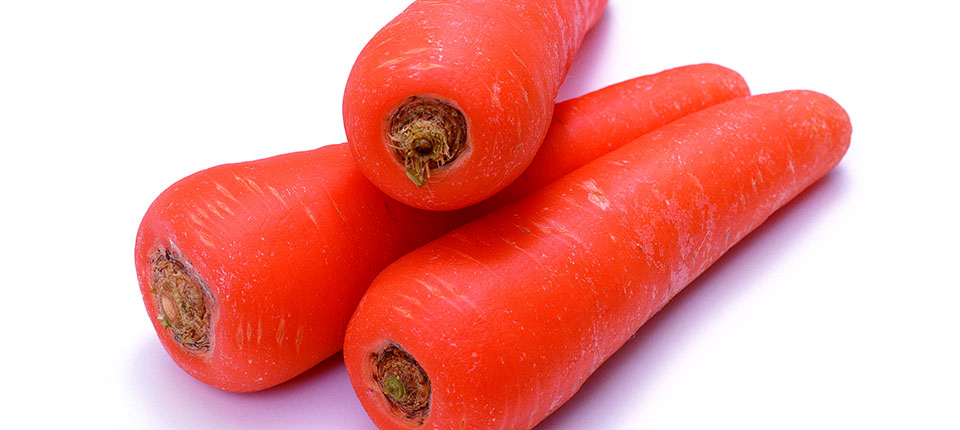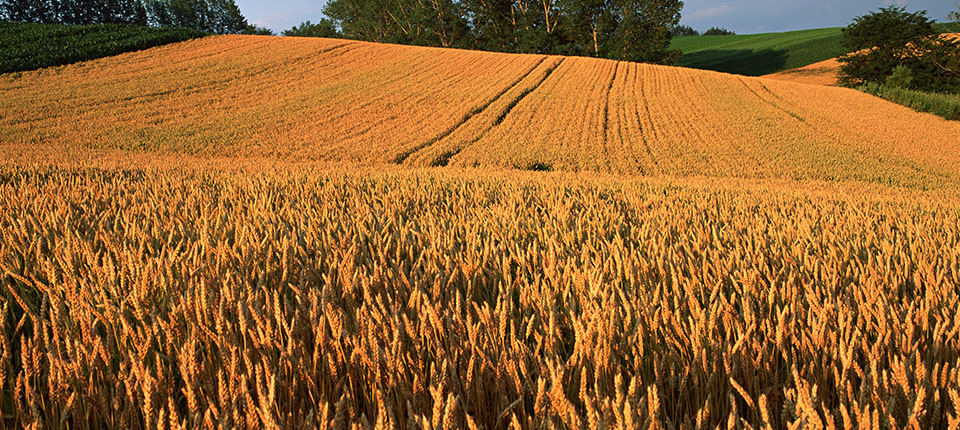
Fresh pasta and functional ingredients: carrot
9 October 2012Published below are the results of a study regarding the addition of carrot-based ingredients to a standard recipe for fresh pasta made with hard semolina wheat and water.
Hard wheat semolina and water simply mixed together produce one of the staples of Italian cuisine: pasta. Given that pasta is a food product widely consumed not only in Italy, but also around the world, it can be considered an excellent “vehicle” to be enriched by adding special ingredients with a high nutritional value (i.e., high level of anti-oxidants, fiber, etc.) to supplement the diet. From this standpoint, if it is properly formulated and responds to precise requisites, pasta would have the full potential of becoming a “functional” food, in other words, a food with properties beneficial to health. Functional foods were created to combine food and diet with consumer health.
In recent years, the academic world and industry have dedicated significant resources to studying and developing ingredients/foods that are nutritionally enhanced/functional and pasta was, and remains, one of the foods studied.
It has been documented that the addition of ingredients with high nutritional value in many cases alters some pasta characteristics, such as cooking performance and texture. In fact, the quality of the pasta (both fresh and “cooked”) and its characteristics depend significantly on the protein content of the semolina and the quality of the gluten formed during kneading. The correct development of the latter is considered to be closely tied to the interaction between the proteins of which it is composed and water molecules. If additional ingredients are added to the recipe that have an affinity with water, they can compete with other components (gluten and starch) for the water molecules. The result of this is that the water is not distributed correctly, something that is fundamental for proper hydration of the gluten network and, therefore, the texture and firmness of the cooked pasta.
We provide here the results of a study by a number of researchers at the University of Parma (Carini et al., 2010) into the addition of carrot-based ingredients such as carrot juice and powder to a standard fresh pasta recipe. Carrots were chosen because they are a rich source of anti-oxidants, a molecule that has a positive impact on human health. However, the addition of carrot as a source of anti-oxidants also brings with it a share of fiber and sugars, molecules that have a great affinity with water and can therefore influence significantly the quality and properties of the final pasta product. We will be examining the effect of the addition of these ingredients on a number of chemical-physical properties of the pasta.
The study involved production of four types of pasta based on the recipes given in Table 1: a standard pasta (STD), and three pastas “enriched”, respectively, with carrot powder (FC), carrot juice (SC) and a mix of these ingredients (FSC). The quantity of the recipe ingredients were optimized and adapted in order to obtain an “acceptable” product. Using a household rotary mixer and pasta sheeter, sheets of pasta 1.5 ± 0.02 mm thick were produced.
Characterizing the finished product
In terms of pasta characterization, fundamental parameters and those correlated to consumer perception were taken into consideration. The pastas enriched with carrot were characterized and compared with the standard control pasta for a number of different parameters:
• color: the following parameters were determined ? L* (Luminosity), a* (red color), b* (yellow color) and ?E [(overall difference in color compared with the standard pasta STD, calculated on the basis of the formula ?(L* sample – L* STD)2+(a* sample – a* STD)2+(b* sample – b* STD)2];
• texture measured in terms of compression: the Texture Analyzer was used to determine force at breakage and elasticity;
• firmness during cooking (AACC Method, 1999): solid residue released into the cooking water was measured;
• study of some water properties: measurement of water content (through stove drying), water activity and freezable water content (using differential scanning calorimetry).
Color, texture and firmness
The addition of carrot (powder, juice or mix of the two) to the STD dough had a significant impact on color parameters measured in the pasta (L*, a* and b*, Table 2). Luminosity values – L* (compared with the “white” components of the pasta) were significantly lower and the increase observed in a* and b* (red and yellow color) was connected to the level of colored pigments in the carrot. The difference in overall color values, ?E, confirmed the color diversity between carrot-enriched samples and STD pasta. This parameter is especially interesting because it represents how color is perceived by the human eye and therefore corresponds to the difference in color the “consumer” perceives when looking at pasta samples. The inclusion of such a brightly-colored ingredient certainly alters the color of a food product such as pasta that the consumer, as is well-known, associates with the color yellow. This parameter is a “tangible” characteristic when producing pasta different from the standard color.
The addition of carrot and, as a result, the presence of fiber and simple sugars in the pasta also had a significant impact on its texture. Breakage values (Figure 1) were lower in the samples containing carrot (FC, SC and FSC) compared with STD pasta, indicating a structure less-resistant to breakage in these samples. The same condition was confirmed by the elasticity values (Figure 2) which were significantly lower in the enriched samples than in the STD (except for the sample containing carrot juice SC).
These results suggest that the fiber and sugars present probably inhibited proper formation of the gluten network (despite the fact that additional gluten was added to the recipe), thus competing with the proteins in the gluten (because of their high chemical affinity with the water) for the water molecules. As a result, the gluten did not attain proper hydration sufficient to give the pasta its characteristic texture. Even the amount of solid residue in the cooking water (Figure 3) indicated the presence of weaker gluten in the samples containing carrot because there were more solids released during cooking in the enriched pastas than in the STD pasta.
Properties of the water
The values for water content, given in Figure 4, were very different in the various pastas, reflecting the different quantity of water present in the initial recipes.
Water activity values (Figure 5) were much lower in the samples containing carrot (~0.92-0.96) compared with the STD (~0.98), probably due to the presence of sugars that formed a tight bond with the water molecules.
Through a process known as differential scanning calorimetry (DSC), it was possible to measure the “freezable” water content in the samples. With this method, the sample is subjected to a programmed time/temperature that cools it extremely rapidly to a frozen state, and then reheats it at a controlled rate to observe the fusion of the ice formed during freezing. From this fusion is obtained the quantity of freezable water that indicates the “availability” of water in the sample. Using the freezable water, the water molecules that can be used to freeze at the pre-set experimental conditions are measured, and these represent the amount of “available” water within the food matrix for the development of microbial flora. Together with water activity, this parameter is of fundamental importance in evaluating the stability of foods over their shelf-life.
In the samples of pasta containing carrot, significantly lower levels of freezable water (Figure 6) were seen (~21, ~29 and ~23 g of freezable water/100 g water, respectively, for the FC, SC and FSC samples) compared with STD pasta (~38.0 g of freezable water/100 g water in the sample). These results indicate that the sugars in the carrot interact with the system water molecules, thus resulting in lower freezable water values compared with the STD pasta. From the standpoint of product stability, the enriched pastas are likely more potentially stable products compared with the STD (in terms of fresh pasta) since they have a lower freezable water content.
Conclusions
Observing the above results, it can be concluded that the key parameters for consumer perception such as color, texture and cooking firmness were negatively influenced by the addition of carrot-based ingredients to the standard pasta recipe.
Pasta texture and cooking firmness parameters indicated that the addition of these ingredients impacted on the formation of the gluten network, thus impeding its proper formation and rendering it weaker and less elastic. The result of this effect would also seem confirmed by the properties of the water which showed an interaction between the water and components in the carrot (sugars and fiber) making it less “available” for the gluten. Therefore, the development of new types of enriched pasta will require further study and examination, especially in terms of recipe development, in order to obtain higher quality pasta comparable to traditional fresh pasta and, as a result, pleasing to consumers.

